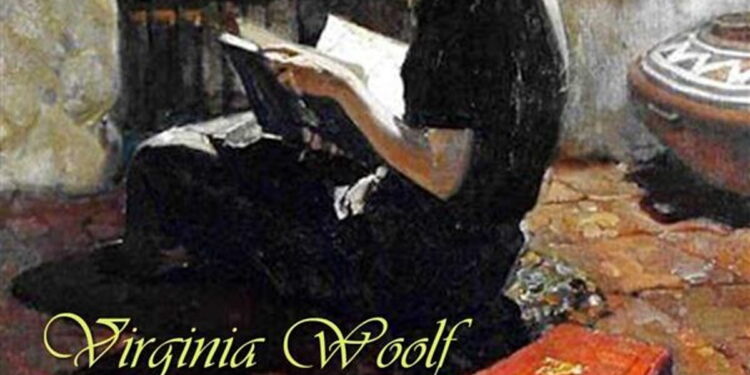“A Room of One’s Own” is an extended essay by Virginia Woolf, first published in 1929. It is considered a seminal feminist work that explores the relationship between women and literature.
A Room of One’s Own Essays Summary By Virginia WoolfThe essay is based on two lectures delivered by Woolf at women’s colleges at the University of Cambridge. Woolf examines the role of women in literature and explores the conditions necessary for women to produce great works of art.
A Room of One’s Own Essays Summary By Virginia Woolf-The title, “A Room of One’s Own,” refers to the importance of having a physical and metaphorical space where women can freely express themselves and pursue their creative endeavors.
- Also Read:-
- Self-Reliance Essays Summary By Ralph Waldo Emerson
- On the Pleasure of Hating Essays Summary By William Hazlitt
- A Supposedly Fun Thing I’ll Never Do Again Essays Summary By David Foster Wallace
- The Fourth State of Matter Essays Summary By Jo Ann Beard
A Room of One’s Own Essays Summary By Virginia WoolfWoolf argues that throughout history, women have been marginalized and excluded from literary traditions. She delves into the limitations imposed on women’s education, their social status, and the lack of financial independence that hindered their ability to write and create. Woolf emphasizes that women need both intellectual freedom and economic security to fully engage in the creative process.
She discusses the importance of women having access to education and the freedom to explore their own thoughts and ideas without the constraints imposed by patriarchal society. Woolf asserts that women should not conform to societal expectations and instead should strive for personal and intellectual independence.
A Room of One’s Own Essays Summary By Virginia WoolfThroughout the essay, Woolf uses a fictional character called “Judith Shakespeare” to illustrate her points. Judith is a hypothetical sister of William Shakespeare, equally talented but constrained by the limitations imposed on women during that time. Woolf uses this character to highlight the societal barriers that have prevented women from achieving their full potential in literature and the arts.
A Room of One’s Own Essays Summary By Virginia Woolf-Woolf also reflects on the significance of women’s history and the need to reclaim and rewrite it. She emphasizes the importance of women having their own stories and voices acknowledged and recorded in order to challenge the dominant male narratives.
About Virginia Woolf
A Room of One’s Own Essays Summary By Virginia Woolf-Virginia Woolf (1882-1941) was an English writer and one of the foremost modernist literary figures of the 20th century. She was born Adeline Virginia Stephen on January 25, 1882, in London, England, into an intellectual and literary family. Her father, Sir Leslie Stephen, was a renowned historian and author, and her mother, Julia Stephen, was a well-known nurse and philanthropist.
A Room of One’s Own Essays Summary By Virginia WoolfWoolf’s early life was marked by the death of her mother when she was only 13 years old and the subsequent deaths of her half-sister and her father. These experiences greatly influenced her later works and themes of mortality, mental health, and the role of women in society.
As a writer, Virginia Woolf is known for her innovative narrative style and exploration of consciousness. She was a central figure of the Bloomsbury Group, a circle of intellectuals, writers, and artists who challenged conventional Victorian and Edwardian values. Woolf’s works often focused on the inner lives and thoughts of her characters, delving into their subjective experiences and perceptions.
A Room of One’s Own Essays Summary By Virginia WoolfSome of her most famous works include “Mrs. Dalloway” (1925), a novel that takes place in a single day and explores the interior thoughts and experiences of its characters; “To the Lighthouse” (1927), a stream-of-consciousness novel that reflects on the passage of time and the complexities of human relationships; and “Orlando” (1928), a novel that spans centuries and explores themes of gender and identity.
Woolf was also an influential feminist writer and essayist. In her essay “A Room of One’s Own” (1929), she argued for women’s access to education and economic independence as necessary conditions for creative freedom. Her writing often tackled issues of gender inequality and the restrictions placed on women in society.
A Room of One’s Own Essays Summary By Virginia Woolf-Unfortunately, Virginia Woolf suffered from mental health issues throughout her life, including severe bouts of depression. On March 28, 1941, at the age of 59, she took her own life by drowning herself in the River Ouse near her home in Sussex, England.
Despite her tragically short life, Virginia Woolf’s contributions to literature and her exploration of complex themes have had a lasting impact. Her innovative writing style and her insights into the human experience continue to be celebrated and studied by readers and scholars worldwide.
Conclusion
A Room of One’s Own Essays Summary By Virginia Woolf-“A Room of One’s Own” is a thought-provoking and influential essay that addresses the issues of gender inequality and women’s representation in literature. Virginia Woolf’s exploration of the societal and economic barriers faced by women serves as a call to action for the recognition of women’s voices and the need for greater gender equality.
A Room of One’s Own Essays Summary By Virginia WoolfWoolf’s emphasis on the importance of a physical and metaphorical space for women to freely express themselves resonates beyond the realm of literature. It highlights the need for women to have autonomy, agency, and the resources necessary to pursue their passions and ambitions. By challenging the traditional roles and expectations imposed on women, Woolf advocates for a more inclusive and equitable society.
“A Room of One’s Own” continues to be relevant today, as it prompts us to reflect on the progress made in the fight for gender equality and the work that still needs to be done. It serves as a reminder that women’s voices and experiences are essential and should be given equal weight and recognition in all aspects of society.
A Room of One’s Own Essays Summary By Virginia WoolfUltimately, Woolf’s essay is a testament to the power of literature as a tool for social change and the importance of empowering women to fully participate in the creative process. It stands as a landmark feminist work that continues to inspire and provoke discussions about gender, art, and the pursuit of personal and intellectual freedom.
FAQ.
Q: When was “A Room of One’s Own” published?
A: “A Room of One’s Own” was first published in 1929.
Q: What is the main theme of “A Room of One’s Own”?
A: The main theme of “A Room of One’s Own” is the relationship between women and literature, focusing on the obstacles faced by women in pursuing creative endeavors and the need for women to have independence, both financially and intellectually, in order to thrive as writers and artists.
Q: Why is the title “A Room of One’s Own” significant?
A: The title “A Room of One’s Own” symbolizes the need for women to have a physical and metaphorical space where they can freely express themselves and pursue their creative ambitions. It represents the importance of autonomy and independence for women’s artistic and intellectual development.
Q: What is the significance of the character “Judith Shakespeare”?
A: “Judith Shakespeare” is a fictional character created by Virginia Woolf to highlight the societal limitations imposed on women and the constraints that have hindered their ability to achieve their full potential in literature and the arts. Judith represents the talented but oppressed sister of William Shakespeare, whose talents were stifled due to the restrictions placed on women during that time.

















